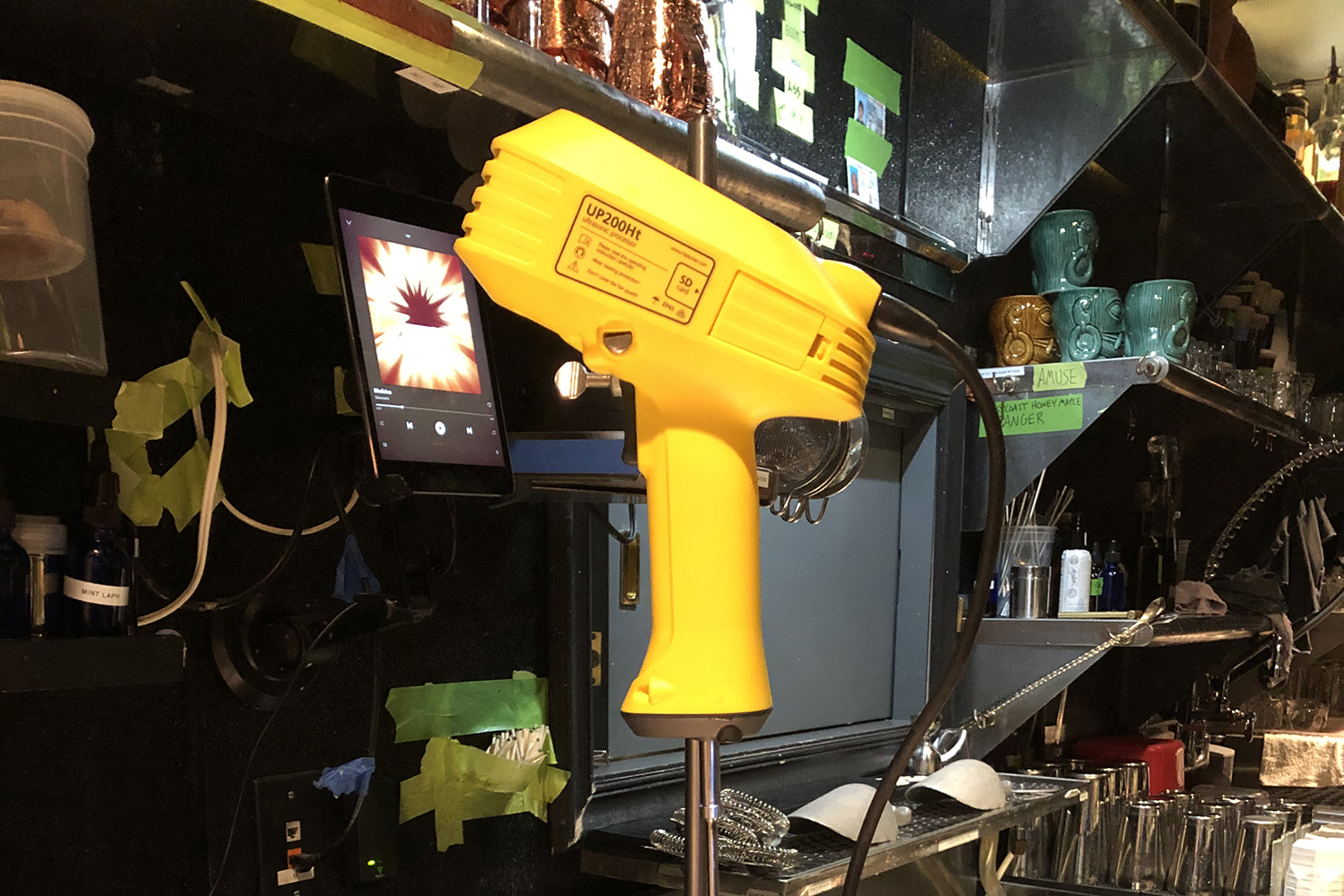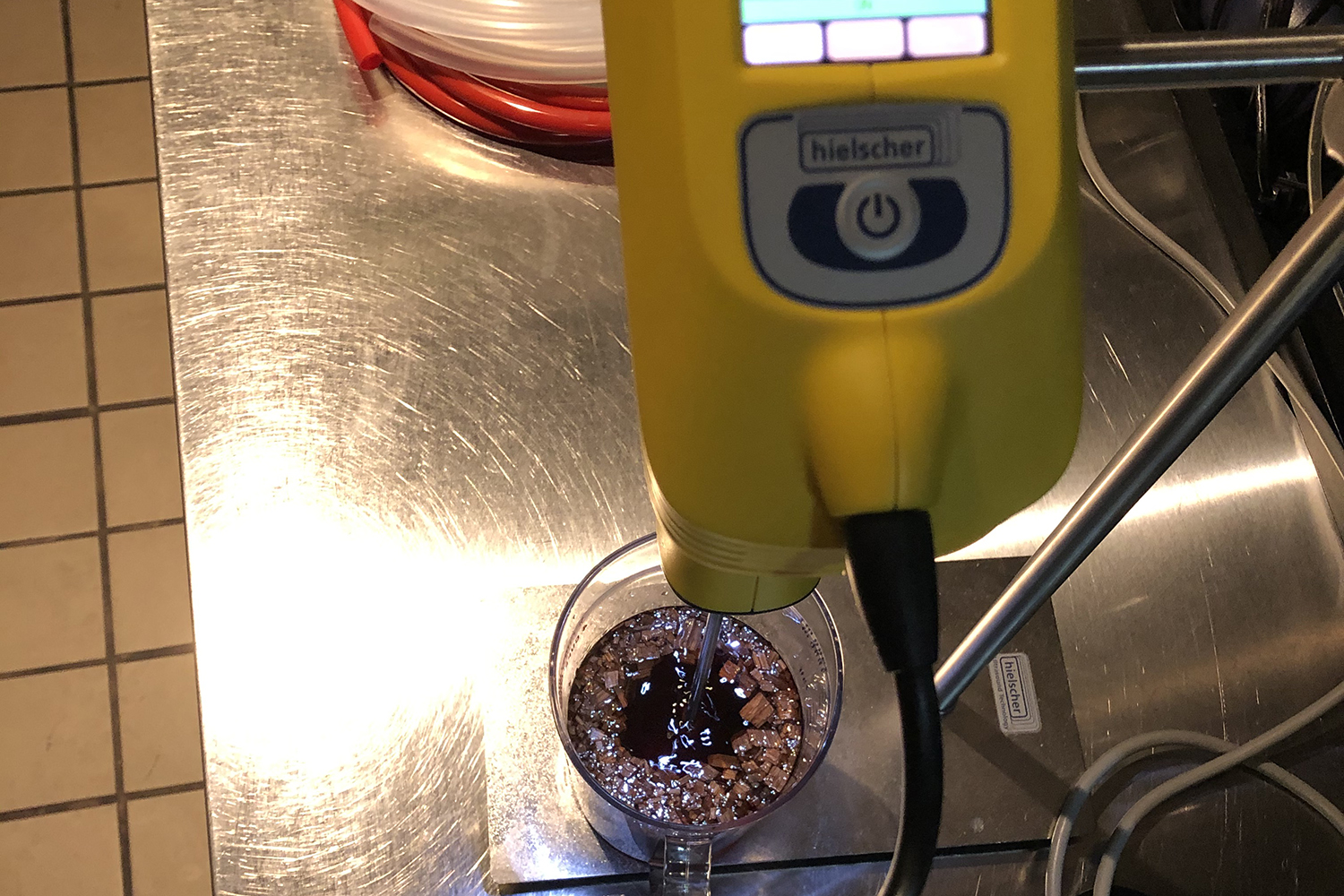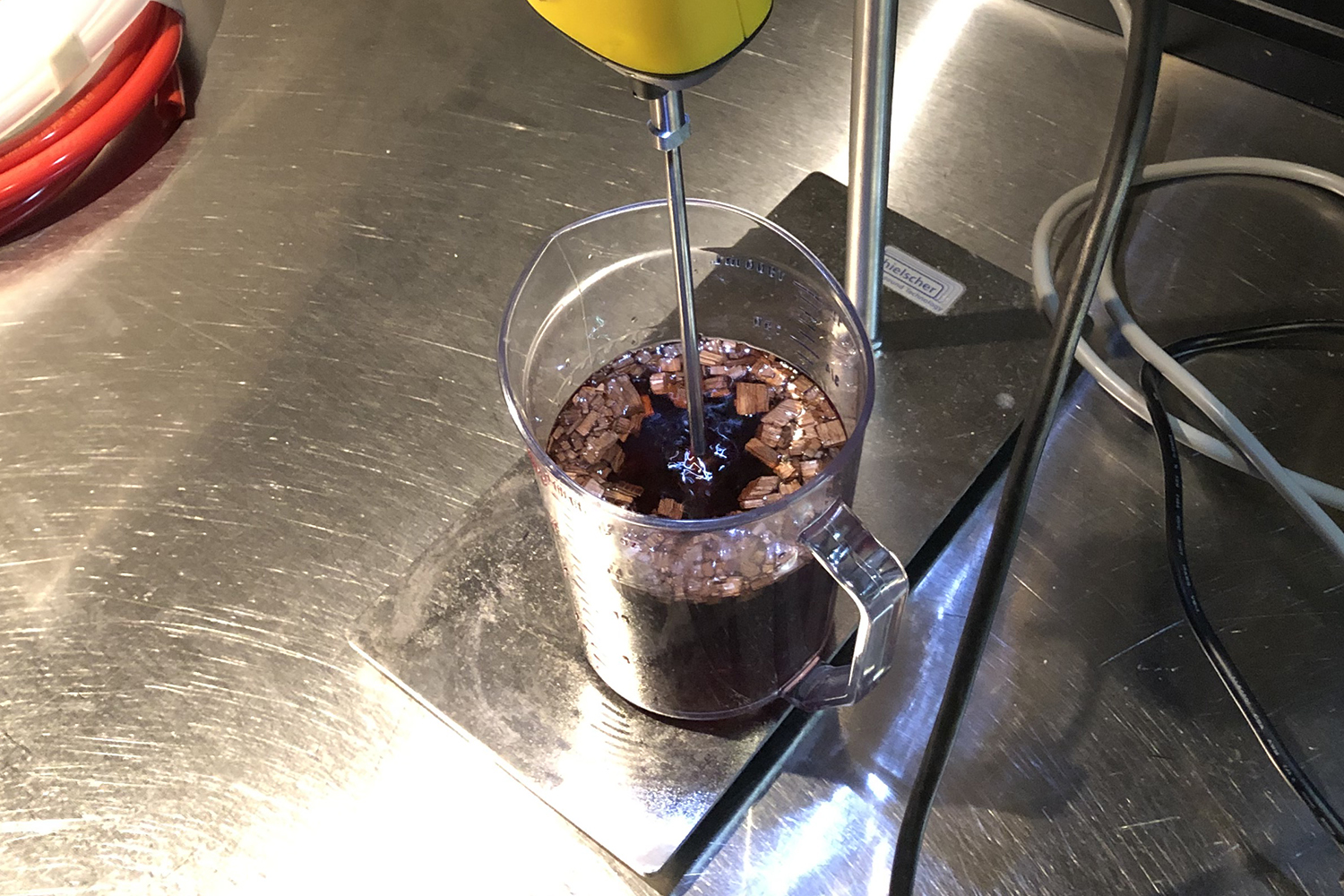It’s the year 2050 and you’ve just ordered an ultrasonic homogenizing cocktail. Notice the unique mouthfeel? See the laboratory set-up behind the bar? High-tech mixology techniques may sound far-off, but you don’t have to wait 30 years to experience them. You simply need a ticket to Kansas City, Missouri.

Named one of the Best Cocktail Bars of the Year, The Monarch Bar treats patrons to innovative cocktail techniques like splitbaseing, clay aging, acid-adjusted juices, and ultrasonic homogenizing.
We spoke to Brock Schulte, bar director and creator of one of the Most Innovative Beverage Programs, to understand exactly what ultrasonic homogenizing is and what it has to do with our round of Negronis and Manhattans.
What is ultrasonic homogenizing?
“Ultrasonic homogenization uses intense sound waves to alter the physical state of liquids and their interactions with solids,” says Schulte. “In a cocktail, it allows us to alter the mouthfeel by homogenizing the ingredients into essentially one ingredient — as if the cocktail had been bottle aged for years in a matter of minutes.”
In other words, this mechanical process makes the small particles of a liquid even smaller and uniform in shape, evenly distributed within the liquid. Not only applicable for mixology, ultrasonic homogenizing can be used to age wine and liquor, aerate batter, stabilize juices and smoothies, tenderize meat, and hydrogenate edible oils.
But is this technique new?
Schulte says that using this technology in a bar setting is not new, however, it’s “advanced and costly.”
Does it require special training?
“Training is minimal but regimented so that you don’t break the expensive equipment due to inexperience,” he says. Which begs the question…
How expensive is the equipment?
Let’s just say, any bar that uses ultrasonic homogenizing has made an investment and therefore probably has bomb cocktails, so order up. “The one we use at The Monarch cost about $4,000,” Schulte says.
Schulte says guys can definitely use this technique at home, “If they want to spend the money, absolutely.” However, he gives a word to the wise: “It does use high-frequency sound waves much like a dog whistle so it is not pleasant to the ears.” If you’re looking to upgrade your at-home bar cart, Amazon has a few machines for $1,000-$2,000.
Other cool high-tech mixology equipment to consider include a super chiller (lets you create ice sculptures out of liquor), liquid nitrogen (please handle with care), a carbonator to add fun bubbles, and a more-accessible iSi Canister to rapidly infuse alcohol with herbs (like, in minutes instead of months).
OK, fine, you have your heart set on an ultrasonic homogenizer.
What are the best cocktails to make using an ultrasonic homogenizer?
“We have had great success with Manhattan and Negroni riffs,” says Schulte. Both drinks have been on The Monarch’s menu since opening in 2017; the Negroni is a private blend of the bar’s favorite spirits complementing true Kansas City culture, homogenized on toasted Limousine Oak.

Recently, Schulte’s Royal Stag cocktail used homogenized hickory bark paired with The Dalmore 12, Redemption Whiskey Rye, and González Byass ‘Matusalem’ Oloroso 30-year-old.
How do you order a drink that has been ultrasonic homogenized?
No need to struggle with pronunciation. Just check the menu. “We list them like any other cocktail on the menu but with a special description,” Schulte says. “Most patrons don’t know even half of what goes into creating the cocktails we curate here. However, we are always happy to explain and teach inquisitive guests. It’s a great part of the job.”
Indeed, a bar that lists this procedure in their cocktail description is probably staffed with mixology geeks like me and you who live talking about the science behind it. So don’t be shy. Just ask!
What is the next high-tech equipment on Schulte’s mind?
A rotovap. This mad-scientist machine increases evaporation. In essence, it’s a distilling tool connected to a vacuum and has been futzed around within the cocktail sphere since around 2014.





